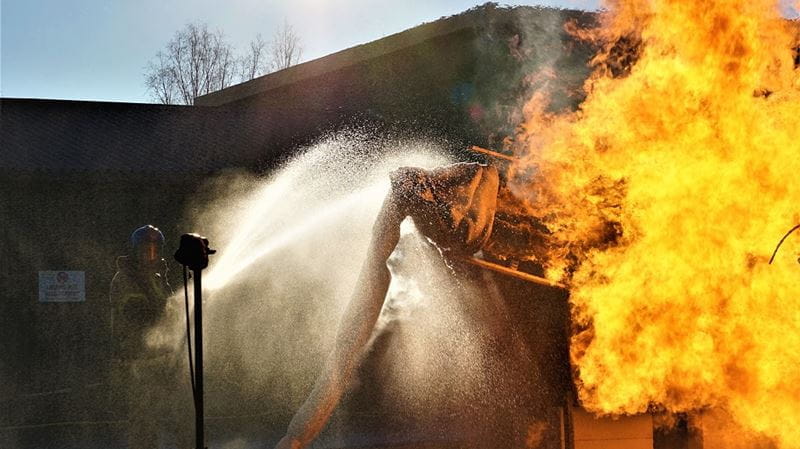Beat the heat

Fire, as the saying goes, is a good servant but a bad master. Energy companies, for example, are constantly aware of the danger of fire as they process vast amounts of hydrocarbons. As the companies focus on safety, value and carbon efficiency, the high importance they place on fire prevention leads them to invest in Trelleborg’s solutions. As Patrick Waal, Business Group Director for Applied Technologies within Trelleborg Offshore & Construction says, “Passive fire protection solutions are available in a series of materials and products to protect personnel, equipment, critical components and structures, and to assist emergency response activity by buying time to gain control of the fire, and evacuate the area.”
With proven engineering and manufacturing techniques for protection of all kinds of fires, from simple cellulose to hydrocarbon and jet fire, rubber materials, which are built-up with layers that meet corrosion, thermal, fire, and mechanical protection requirements, protect structures from exceeding temperature limits. Rubber has the unique capability of withstanding weather conditions, movements, providing ease of inspection and fire protection over the life of a project.
The offshore environment is just one example of an extreme environment with a high fire risk. Exposed to the corrosive effects of the sea, platforms also have to withstand the vibration of oil pumps and the motion of waves. Often split into various units, with living quarters separated from the production area, rigs need overall protection so that a fire can be effectively isolated and its impact minimized.
In an offshore facility, the risk of rapid, uncontrolled spread of fire is greater than in many other environments. So it is essential to ensure the complete protection of all areas to prevent the spread of fumes and flames. The solutions that Trelleborg offers not only do this but also damp and give noise protection. The flexible nature of Trelleborg’s rubber-based materials provides protection from vibrations, collisions and explosions.
Take Trelleborg’s latest Firestop material, for example, which was developed at its in-house laboratory in Krokstadelva, Norway. Launched in February 2018, the material is thinner and lighter than any other fire protection material on the market. It is made from a rubber-based compound that can be molded to fit structures of any shape, “like a waffle iron,” says Waal, providing protection for personnel and equipment while also preventing structures from exceeding critical temperature limits.
Trelleborg applies Firestop protection to each section of offshore risers, or vertical pipeline, in the “splash zone” – the area between the water’s surface and the platform. Covering this vulnerable area with this durable, polymer-based, corrosion-free fire-protective coating ensures full protection.
When it comes to protecting the platforms’ helipads and other surfaces from fire, Vikodeck is used. This tiled rubber surfacing is highly suited to harsh offshore oil and gas environments. Energy companies that perform offshore drilling can have these one-square-meter fireresistant tiles laid on the aluminum decks of their oil platforms. Easy to install, they are also maintenancefree. Besides offering fire protection, they can withstand corrosion and wear, and are highly resistant to abrasion, impact, blasting and jet fire.
“The life cycle of a typical platform today is 30 years, and Vikodeck will last at least that long,” Waal says.
In fact, that goes for all of Trelleborg’s Firestop solutions. “Certain Trelleborg products now in use out in the North Sea were installed in the 1980s, and they’re still going strong,” says Waal. “Our track record is immaculate.”
Trelleborg focuses on a wide variety of industries and applications for its fire protection products. “In the next five years, we want to become just as big outside the oil and gas industry as we are within it,” Waal says. “We’re busy exploring the possibilities, and there’s plenty of scope for development.”
For more information, please go to:
www.trelleborg.com/applied-technologies
This is an article has been reproduced from Trelleborg's T-Time magazine. To download the latest edition, go to: www.trelleborg.com/t-time
Press Service: This article is available in eight languages. Media are welcome to use this article in their own publications. To download the article and pictures in any language go to https://bamboo-contentpartner.com/. If you reproduce information from this release, please give contact details as: www.trelleborg.com.